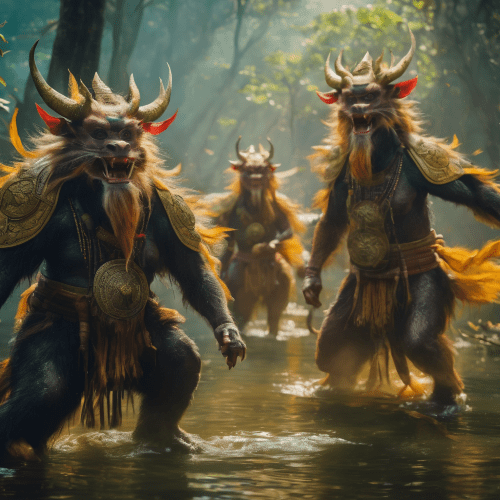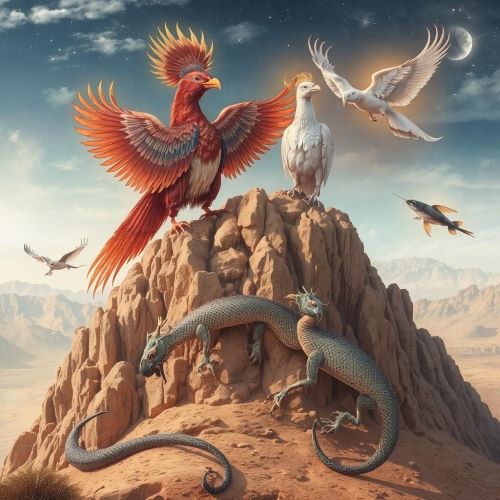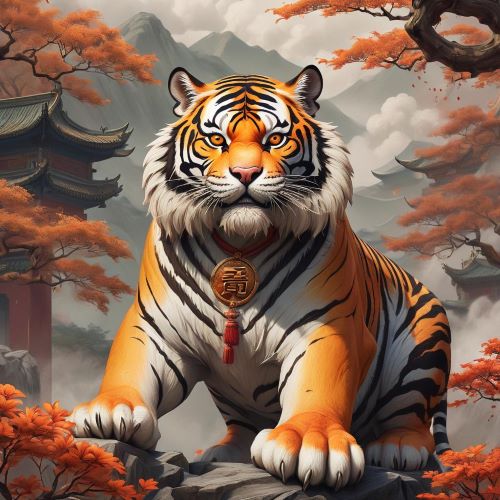The Four Vietnamese Sacred Animals – Guardians of Culture and Spirit
Introduction
In Vietnamese culture, spirituality and symbolism are deeply intertwined with the natural world. Among the most enduring expressions of this connection are the Tứ Linh, or Four Sacred Animals of Vietnam: the Dragon (Long), the Phoenix (Phượng), the Turtle (Quy), and the Unicorn (Lân). These mythical creatures are not just fantastical beings—they represent the moral, spiritual, and philosophical ideals of the Vietnamese people. Each sacred animal holds unique significance and appears frequently in architecture, folklore, art, and religious practices.
In this article, we explore the origins, symbolism, and lasting cultural impact of these four Vietnamese sacred animals.
1. The Dragon (Long) – The Symbol of Power and Prosperity
Among all Vietnamese sacred animals, the Dragon holds the most revered status. Unlike its fire-breathing Western counterpart, the Vietnamese dragon is a benevolent and wise creature. Often associated with rain, rivers, and agricultural abundance, the Dragon is considered a celestial being that controls the elements and ensures prosperity.
The Vietnamese Dragon is a blend of many creatures: the body of a snake, the claws of an eagle, the horns of a deer, and the scales of a carp. It represents both yin and yang, symbolizing balance and harmony in the universe. In ancient times, emperors claimed descent from dragons, reinforcing their divine right to rule.
You’ll find dragon motifs in royal architecture, temple carvings, and ceremonial robes. The Dragon Dance, a staple of Vietnamese festivals, invokes good fortune and repels evil spirits.
2. The Phoenix (Phượng) – Emblem of Virtue and Grace
The Phoenix in Vietnamese mythology is a majestic bird that rises from the ashes, embodying rebirth, peace, and moral righteousness. It often represents the feminine principle (yin) and is seen as a counterpart to the Dragon. When depicted together, the Phoenix and Dragon symbolize a perfect matrimonial harmony—commonly featured in wedding ceremonies and traditional artwork.
Unlike the Western phoenix associated primarily with death and resurrection, the Phượng in Vietnamese culture also signifies the arrival of peace and a new golden age. Legends say the Phoenix only appears in times of great peace and prosperity, making it a powerful omen in Vietnamese lore.
Elaborate phoenix motifs often decorate pagodas, royal palaces, and traditional áo dài garments, particularly for women.
3. The Turtle (Quy) – Guardian of Longevity and Wisdom
The Turtle is one of the most respected sacred animals in Vietnam, symbolizing longevity, patience, and knowledge. Unlike the more mystical Dragon or Phoenix, the Turtle is grounded, wise, and deeply connected to the Earth.
One of the most iconic symbols of the Turtle in Vietnam is the Hoàn Kiếm Lake in Hanoi. According to legend, a divine Turtle surfaced from the lake to reclaim a magical sword from Emperor Lê Lợi, signifying the return of power to the heavens. Today, the Turtle Tower in the center of the lake stands as a monument to that sacred encounter.
The Turtle is also one of the few sacred animals believed to have real-world counterparts. Ancient stone turtles bearing steles (inscribed tablets) can be found at the Temple of Literature, serving as protectors of knowledge and record-keepers of Vietnam’s educational history.
4. The Unicorn (Lân) – Symbol of Justice and Benevolence
Though called a “unicorn,” the Vietnamese Lân is quite different from the Western version. It is more akin to the Chinese Qilin—a mythical beast with a dragon’s head, lion’s body, and deer’s hooves. The Lân represents nobility, wisdom, and justice, and is often seen as a harbinger of good fortune and protector against evil.
The Lân plays a central role in the Lân Dance, often performed during Tết (Lunar New Year) and other major festivals. This colorful, acrobatic performance is believed to ward off evil spirits and usher in blessings for the community.
Temples and shrines often feature statues of the Lân as gatekeepers, symbolizing the need for moral integrity and social order.
Cultural Significance of the Four Sacred Animals
The Tứ Linh are more than decorative elements—they are moral signposts and spiritual guardians. Together, they represent the harmony between the elements, the divine, and human values. Vietnamese sacred animals are frequently used in feng shui arrangements, temple architecture, martial arts symbolism, and national identity.
In education, the Turtle inspires perseverance; in politics, the Dragon asserts rightful power; in family life, the Phoenix denotes balance and renewal; and in community rituals, the Lân emphasizes social virtue and collective protection.
As Vietnam continues to modernize, these symbols remain deeply ingrained in the national consciousness—bridging ancient wisdom with contemporary cultural expression.
Conclusion
The Four Sacred Animals of Vietnam—the Dragon, Phoenix, Turtle, and Unicorn—form a cornerstone of the nation’s mythological and spiritual landscape. These Vietnamese sacred animals embody essential values like power, grace, wisdom, and justice. They continue to inspire, protect, and guide both individuals and the collective identity of Vietnam.
Whether you’re a cultural enthusiast, mythology lover, or traveler seeking deeper insight, understanding these mythical creatures offers a powerful glimpse into Vietnam’s soul.
No posts were found.









